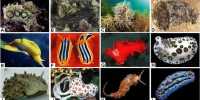A recent study suggests that replacing 20% of cattle meat with microbial protein – a meat alternative produced in fermentation tanks – by 2050 might cut deforestation in half. The market-ready meat alternative has a comparable taste and texture to beef, but it is a biotech product that requires far fewer land resources and greenhouse gas emissions from agriculture and land-use change. This is based on the idea that a growing global population’s hunger for meaty bites is increasing, and it is the first time researchers have projected the development of these market-ready meat replacements into the future, analyzing their potential environmental impact.
The market-ready meat alternative has a comparable taste and texture to beef, but it is a biotech product that requires far fewer land resources and greenhouse gas emissions from agriculture and land-use change. This is based on the idea that a growing global population’s hunger for meaty bites is increasing, and it is the first time researchers have projected the development of these market-ready meat replacements into the future, analyzing their potential environmental impact.
“The food system is responsible for one-third of worldwide greenhouse gas emissions, with ruminant meat production being the single largest source,” says Florian Humpenöder, lead author of the study and researcher at PIK. This is due to the clearing of more forests that store a lot of carbon for cattle grazing or growing feed, as well as the additional greenhouse-gas emissions from animal agriculture. Existing biotechnology could contribute to the solution: nutritious protein-rich biomass with meat-like texture created by microbes like fungi via fermentation, which scientists refer to as “microbial protein.”
The food system is responsible for one-third of worldwide greenhouse gas emissions, with ruminant meat production being the single largest source. This is due to the clearing of more forests that store a lot of carbon for cattle grazing or growing feed, as well as the additional greenhouse-gas emissions from animal agriculture.
Florian Humpenöder
“In the future, replacing bovine meat with microbial protein might significantly reduce the food system’s greenhouse gas footprint,” Humpenöder says. “The good news is that people do not need to be concerned about eating exclusively greens in the future. They can continue to consume burgers and the such; it’s only that the burger patties will be made in a different method.”
Sustainable burgers: replacing minced red meat with microbial protein
In contrast to earlier studies at the level of single items, the team of researchers from Germany and Sweden integrated microbial protein in a computer simulation model to discover environmental effects in the context of the entire food and agriculture system. Their simulations run through 2050 and take into account future population increase, food consumption, dietary patterns, and land use and agriculture dynamics. As meat consumption rises in the future, more woods and non-forest natural vegetation may become extinct to make way for pastures and crops.
“We discovered that if we substituted 20% of ruminant meat per capita by 2050, annual deforestation and CO2 emissions from land-use change would be cut in half compared to a business-as-usual scenario. Reduced livestock numbers not only reduce land pressure but also reduce methane emissions from cow rumens and nitrous oxide emissions from fertilizing feed or manure management “says Humpenöder “So substituting minced red meat with microbial protein would be a fantastic start to reducing the negative repercussions of modern cattle farming.”

Microbial protein can be decoupled from agricultural production
“There are basically three kinds of meat analogues,” adds Isabelle Weindl, co-author and PIK researcher. “There are plant-based ones, such as soybean burger patties, and animal cells developed in a petri dish, also known as cultured meat, which is currently quite expensive but has recently gained a lot of public interest. And then there’s fermentation-derived microbial protein, which we find really intriguing. It is already widely available in supermarkets, for example, in the United Kingdom and Switzerland, and, critically, it can be largely disconnected from agricultural output. Even when sugar is used as a feedstock, our findings reveal that microbial protein requires substantially less agricultural land than ruminant meat for the same protein supply.”
Microbial protein, like beer or bread, is produced by particular cultures. The bacteria feed on sugar and maintain a constant temperature, producing an extremely protein-rich product that can taste, feel, and be as healthy as red meat. It was developed in the 1980s and is based on a centuries-old fermenting technology. In 2002, the US Food and Drug Administration (FDA) approved a microbial protein meat substitute (mycoprotein) as safe.
Green biotechnology needs to be fuelled by green energy
“Biotechnology offers a promising toolset for a variety of land-related concerns, from ecosystem preservation to boosting food security,” adds co-author and PIK Land Use Management group leader Alexander Popp. “Alternatives to animal proteins, particularly dairy substitutes, can greatly increase animal welfare, save water, and alleviate pressure on carbon-rich and biodiverse ecosystems.” However, there are significant issues associated with transitioning more production from animals to fermentation tanks, most notably the energy supply for the production process.
“A large-scale transition to biotech food necessitates a large-scale decarbonisation of electrical generation in order to fully realize the climate protection potential,” Popp adds. “However, if done correctly, microbial protein can assist meat-lovers in accepting the transition. It can make a significant difference.”















